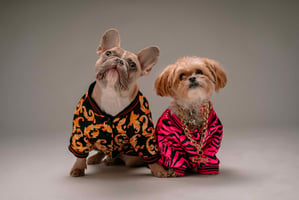Do you have a pet dog that sheds a lot of fur? Are you looking for ways to reduce the amount of fur...
How to Discipline Your Dog: A Comprehensive Guide
Disciplining your dog is an important part of being a responsible pet owner. It helps create a strong bond between you and your pet, and teaches your dog the proper behaviour. This guide will show you the best methods for disciplining your dog and help you create a safe and loving environment for both you and your four-legged friend.
Understand Why You Need to Discipline Your Dog
Dogs need discipline for the same reasons as children. It helps them understand the boundaries of acceptable behaviour, and teaches them how to behave in different situations. Without discipline, dogs can become unruly and disruptive, which can lead to dangerous situations.
It's important to remember that discipline should not be used to punish your dog. You should only use discipline to teach your dog the proper behaviour. Punishment will only make your dog afraid and create an unhealthy relationship between you and your pet.
Identify What Behaviour You Want to Change
Before you start disciplining your dog, you should identify which behaviours you want to change. This could be anything from barking too much to jumping on visitors. By understanding what behaviour you want to change, you can create a plan for disciplining your dog in the most effective way.
It's important to be consistent when disciplining your dog. If you don't respond to the same behaviour the same way every time, your dog won't understand what you want from them.
Create a Training Plan
Once you've identified the behaviour you want to change, you should create a plan for training your dog. This plan should include the following elements:
- Positive reinforcement – reward your dog when they do something right. This could be with a treat, a toy, or verbal praise.
- Negative reinforcement – ignore your dog when they do something wrong. This will teach them that the behaviour is unacceptable.
- Redirection – redirect your dog's attention when they start doing something wrong. This could be with a toy, a treat, or a game.
- Consistency – make sure you're consistent with your training. If you don't respond to the same behaviour the same way every time, your dog won't understand what you want from them.
It's important to remember that training takes time and patience. It can be frustrating at times, but if you stay consistent and use positive reinforcement, you'll see results in no time.
Use the Right Tools
When disciplining your dog, it's important to use the right tools. The most common tools are leashes, collar, and muzzle. Leashes are used to keep your dog from running away or getting into trouble. Collars are used to control your dog and prevent them from pulling on the leash. Muzzles are used to stop your dog from biting or barking.
It's important to use the right size and type of tool for your dog. If the tool is too tight, it can cause discomfort and even pain. If it's too loose, it won't be effective.
Be Patient and Consistent
When disciplining your dog, it's important to be patient and consistent. Don't expect results overnight – it takes time for your dog to learn the proper behaviour. Make sure you respond to the same behaviour the same way every time, and reward your dog when they do something right.
It can be difficult to stay patient and consistent, especially when your dog isn't responding the way you want them to. But if you stay focused and use positive reinforcement, you'll see results in no time.
Know When to Seek Professional Help
If you're having trouble disciplining your dog, it's important to seek professional help. A professional dog trainer can provide personalized advice and help you create a plan for training your dog.
It's important to remember that disciplining your dog should not be a negative experience. With the right tools and techniques, you can create a loving and safe environment for both you and your four-legged friend.
By following the tips in this guide, you can learn how to discipline your dog effectively and create a strong bond between you and your pet. Good luck!



